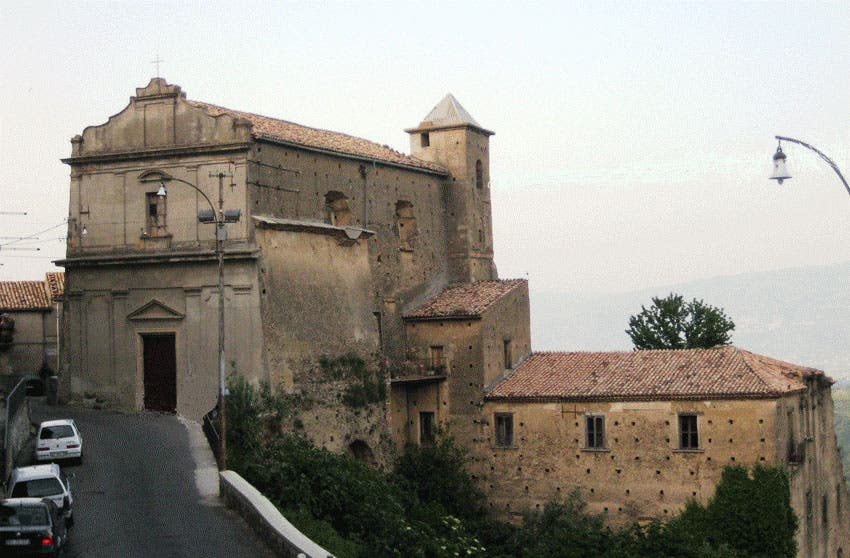Scientist of the Day - Paolo Antonio Foscarini
Paolo Antonio Foscarini, an Italian priest, died June 10, 1616, at the age of about 51; we do not know when he was born. Foscarini was a member of the Carmelite order and taught philosophy in Messina before becoming a Provincial for the order in Calabria, the boot of Italy. In 1615, on his way to preach in Rome, he stopped in Naples to print up a short book, Letter on the Opinion, held by Pythagoreans and Copernicus, of the Motion of the Earth and the Stability of the Sun, and of the New Pythagorean World System. In his pamphlet, Foscarini discussed whether the Copernican proposal that the earth moves is compatible with Holy Scripture, and his basic premise was that the Bible was intended to teach humans how to achieve salvation and was not a book about nature. Indeed, God made it clear in Ecclesiastes that if humans want to know how nature works, they will just have to figure it out for themselves. So when Joshua asked God to stop the Sun, we should not read "stop the sun" literally, because the Bible is not trying to tell us what moves and what doesn't. Interestingly, Foscarini did not maintain that the Copernican system is true; he did think it was more probable than the old geocentric system, but he knew there was no evidence for Copernicanism. He simply argued that should Copernicanism one day be demonstrated to be true, there should be no conflict with Scripture.
While he was in Rome in the spring of 1615, his newly-printed pamphlet was attacked by an unnamed member of the Congregation of the Inquisition. Foscarini wrote a defense, and submitted both his Letter and his “Defense” to Roberto Cardinal Bellarmine, the Pope's principal adviser on matters theological, for his opinion. Bellarmine's response came practically by return mail. While polite, Bellarmine made it very clear that, unless and until Copernicanism has been demonstrated to be true, we must not go about reinterpreting Holy Scripture and disregarding the legacy of Church fathers. The next year, Foscarini's book would be condemned and placed on the Index of Forbidden Books. Foscarini's letter came as a shock to Galileo, who had written a letter himself on the subject of Copernicanism and Scripture (the Letter to Castelli, 1613) and was in the process of writing a longer one (the Letter to the Grand Duchess Christina, 1615). Probably because of Foscarini, Galileo decided not to publish the Letter to Christina. Probably also because of Foscarini, Galileo's unpublished letters were examined by Cardinal Bellarmine in 1616, and shortly thereafter, Copernicanism was proscribed by the Inquisition and Galileo was warned by Bellarmine not to hold or defend the Copernican system. The “Galileo Affair” had begun, and Foscarini, not Galileo, was the one who instigated it.
Foscarini disappeared from the controversy as quickly as he created it, dying in the early summer of 1616. His original Letter of 1615 is very scarce, but it was later reprinted as an appendix to the Latin editions of Galileo’s Dialogue, which was called Systema cosmicum, of which we have the first four editions in the Library (1635, 1641, 1663, and 1699); we show the Foscarini title from the 1635 first edition (second image). Foscarini’s letter was also translated into English and included in Thomas Salusbury’s Mathematical Collections and Translations (1661), which we also have in the History of Science Collection (first image). Since we have no portrait of Father Paolo, we show instead a bust of the theologian he failed to convince, Cardinal Bellarmine (third image), sculpted by none other than Gian Lorenzo Bernini.
Although we don’t know where Foscarini died, we do know that in 1609, before all the fuss, he helped design a Carmelite Church, S. Maria del Carmine, in Montalto Uffugo, Calabria. That church still stands (fourth image), and it is at least possible that Foscarini is buried there. It would be nice if the circle were closed in this way. Dr. William B. Ashworth, Jr., Consultant for the History of Science, Linda Hall Library and Associate Professor, Department of History, University of Missouri-Kansas City. Comments or corrections are welcome; please direct to ashworthw@umkc.edu.









